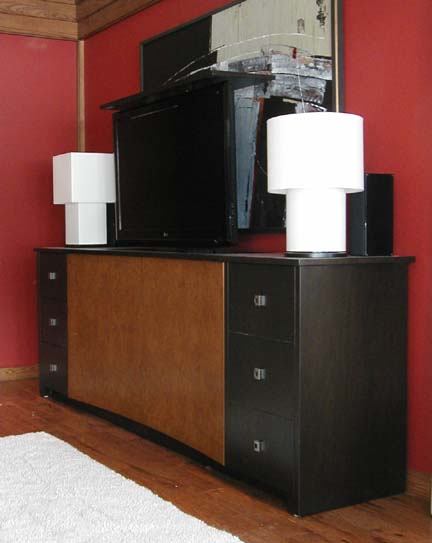Keeping Cabinets on the Wall
Sturdy construction and strong attachments are key safety factors. May 4, 2005
Question
I have just installed an upper that weighed more than most typical uppers (58"x46") and am wondering if #10 3" screws in 3 studs in upper and lower nailer is sufficient (6 total screws in middle of each stud). Cabinet will hold dishware and wine.
Forum Responses
(Cabinet and Millwork Installation Forum)
From contributor J:
When I hang large cabinets, the first thing I do is make sure the cabinet has enough screws in the nailers to hold it together. Then I put Liquid Nails on the back of the cab and hit every stud possible with as many screws as possible. I have seen cabinets heavily loaded come apart while hanging on the wall. If you can use some kind of hanging cleat, that always helps.
From contributor K:
How do you fabricate your cabs?
From the original questioner:
Box is 3/4" veneer core birch. Face frame is 3/4" hardwood. 3/4" deck dadoed top rabbeted. Glued and 2 1/2" finish nailed. Top nailer is 2 1/4" finish nailed to sides of box and multiple nails through top of box. Bottom nailer is 3/4" glued and multiple staples. Both ends are finished so back is rabbeted and stapled. I've never had a problem in the past, but this one is bigger than most I've made.
From contributor E:
Next time, just to let you sleep at night, secure a 12" wide x 3/4" x full length backer board into the wall with as many screws and as much glue as you can, located behind the upper nailer, and secure the cabinet to that (and the bottom nailer also, of course). I would prefer to use a hanging (or French) cleat and after the cabinet is set, secure it in position with a couple of nails in unobtrusive corners. Your cabinet construction sounds just fine, though you might want to go back in a couple months on some pretext and check to make sure the cabinet is not racking.
From contributor A:
I have to share this story. Last year a lady came into our shop and had us price a set of wall cabinets for the garage wall. The price was too steep for her husband's taste (although they are very wealthy), so he went to the big orange store and bought some cheapos and hung them himself. In the middle of the night, they heard a loud crash and in the morning found the cabinets laying across the hood of her spankin' new Mercedes. The back of the cabs were still attached to the wall. They bought our cabinets.
From contributor R:
Cabs coming off the wall are what my nightmares are made of.
Typically, I build my cases from 3/4" ply. Top is rabbeted into sides and glued and nailed in place. Deck is full dado into sides at 1 1/4" from bottom for 2" FF cabs, rabbeted otherwise same as top for frameless. Back is glued in groove with nailers behind. Nailers are glued to backs, sides, and top/deck and pocket screwed into sides and nailed to top/deck. Because the nailers are totally hidden, I can switch the top one out for French cleats when desired for specific jobs or leave as plain nailers.
I have not had a cab pull apart yet, but am wondering if putting screws through the sides and into the top/bottom would make them stronger or be overkill. The screws would be hidden by adjoining cabs or end panels, so putting them in won't hurt the appearance. I'm just wondering if it'd be too much.
From contributor O:
We glue, nail and screw every cabinet including the nailers. Some people say it is too much, but none of us lose any sleep at night. When we have a long run of large uppers, we put them together with sleeve screws or sex bolts just for added security.
I had a call one day from my boss that one of our cabs fell off of the wall on top of someone. I went to see about it and when I got there, the first thing I saw was the back still hanging on the wall. The builder only nailed the cabinet together. The office girl loaded the cab full of copy paper and when another lady opened the door to get some, the whole thing came down on top of her. Lucky for us, she was okay. The builder was fired.
From contributor B:
Why don't you just use 3/4" material for the back? Makes assembly easy and no nailers to fasten, and the box is rigid and square. Works for me.
From contributor M:
Use a hanging cleat and construction adhesive like others have mentioned. You may also want to dado this one into sides instead of just rabbet.
From contributor T:
Yeah. What is wrong with 3/4 backs screwed and glued on? You can rabbet the sides to accept the back for any end cabs. Does it save more money in materials than time to mess with nailers?
